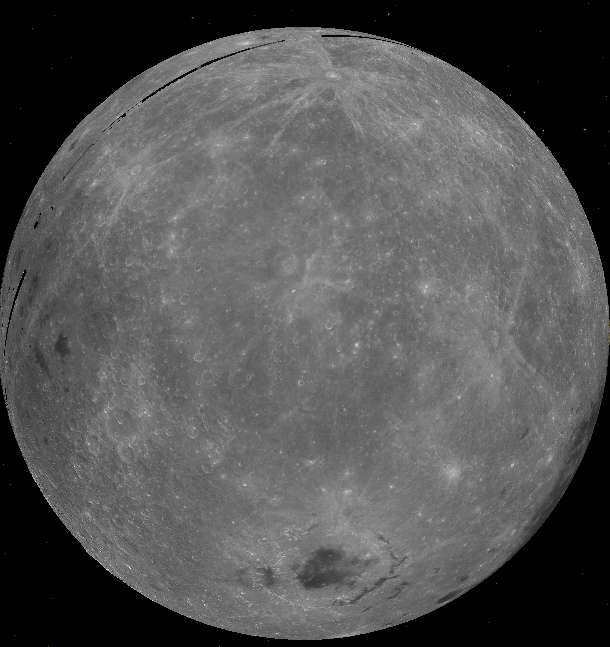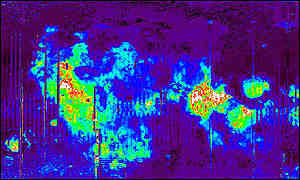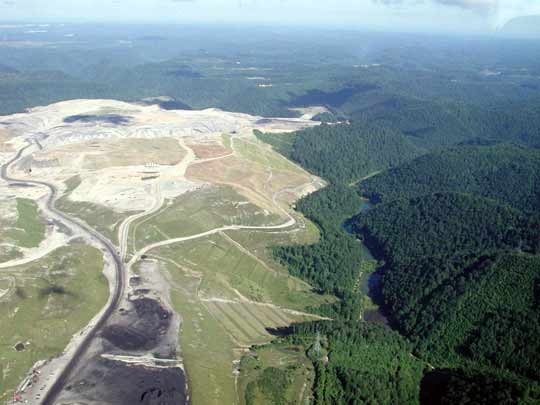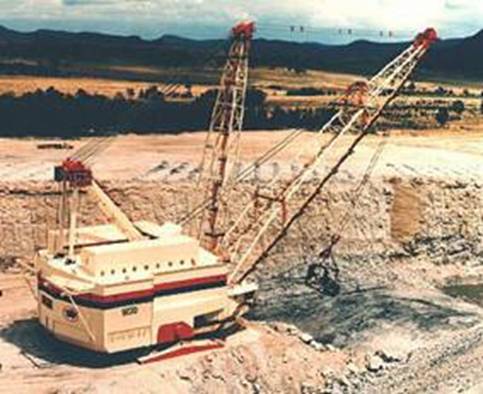It looks like you're using an Ad Blocker.
Please white-list or disable AboveTopSecret.com in your ad-blocking tool.
Thank you.
Some features of ATS will be disabled while you continue to use an ad-blocker.
share:
Here's a pretty picture...........

I would also like to spend some time looking into magnetic anomalies on the lunar surface in the areas that contain the surface swirls. I'm not sure of the significants of it yet, but this is something that I find interesting.
It could be a natural occurance that we don't understand, or it could be a dumping area for tailings from a mining operation that has been going on for quite some time.
I'll see what comes of this and let you know.............

I would also like to spend some time looking into magnetic anomalies on the lunar surface in the areas that contain the surface swirls. I'm not sure of the significants of it yet, but this is something that I find interesting.
It could be a natural occurance that we don't understand, or it could be a dumping area for tailings from a mining operation that has been going on for quite some time.
I'll see what comes of this and let you know.............
I'm trying to track down the source of this image so that I can get a hi-res version.

The image is shown in some news stories about the amount of helium 3 that is on the surface of the Moon. The red indicates the highest concentrations of the element.
Links to several stories that have this picture.
news.bbc.co.uk...
www.blog.speculist.com...
www.blog.speculist.com...
I may have missed something in the articles, but I can't find a link to the original.
Here's an interesting note from one of the links.......
Any large scale extraction of helium-3 would require a large area to be striped away and processed. That would leave a significant scar on the surface of the Moon just like strip mining does on the surface of the Earth.

And this kind of mining requires very large equipment and processing facilities that should be clearly visible from orbit.

All of these things would be very hard to hide because it must be done on the surface. The helium 3 is only in the top layer of the Lunar regolith, so a base underground would have no access to the element at a deeper level.
If anyone can nail down a hi-res version of the top picture I'll do a complete search of the red areas with World Wind to see if I can find anything obvious in the areas marked in red.
Thanx.
anx........
P.S. - I wanted to correct my earlier comment about deuterium on the Moon.
I stated that the Moon lacked any deuterium, but on further examination, there is some quantity of deuterium on the Moon. I'll try to find out how much................

The image is shown in some news stories about the amount of helium 3 that is on the surface of the Moon. The red indicates the highest concentrations of the element.
Links to several stories that have this picture.
news.bbc.co.uk...
www.blog.speculist.com...
www.blog.speculist.com...
I may have missed something in the articles, but I can't find a link to the original.
Here's an interesting note from one of the links.......
How much Helium-3 is on the Moon?
To extract one ton of helium-3, it is estimated that 200 million tons of lunar soil would have to be processed [in helium-3 rich regions of the Moon]. That is equivalent to mining the top 2 meters of a region 10 kilometers square.
Sounds like a lot of work for a little helium-3.
www.blog.speculist.com...
Any large scale extraction of helium-3 would require a large area to be striped away and processed. That would leave a significant scar on the surface of the Moon just like strip mining does on the surface of the Earth.

And this kind of mining requires very large equipment and processing facilities that should be clearly visible from orbit.

All of these things would be very hard to hide because it must be done on the surface. The helium 3 is only in the top layer of the Lunar regolith, so a base underground would have no access to the element at a deeper level.
If anyone can nail down a hi-res version of the top picture I'll do a complete search of the red areas with World Wind to see if I can find anything obvious in the areas marked in red.
Thanx.
anx........
P.S. - I wanted to correct my earlier comment about deuterium on the Moon.
I stated that the Moon lacked any deuterium, but on further examination, there is some quantity of deuterium on the Moon. I'll try to find out how much................
An interesting note from Popular Mechanics that explains the lack of helium 3 on Earth.
Another snip from a very long article also backs up my thoughts on the amount of surface scaring that would have to occur to mine helium 3 from the Lunar surface.
Take a look at the above story if you want a good primer on this isotopes.
It looks like this is going to be a very valuable fuel in the future, but I don't think any nation on Earth has the ability to mount such an expensive operation at this point.
This type of mining would require massive amounts of equipment and supplies to be lifted into Earth's orbit, then transported 250,000 miles to the Lunar surface.
An undertaking of that scale would require thousands of support people here on Earth, and that would be very difficult to keep secret.
It is not a lack of engineering skill that prevents us from using helium-3 to meet our energy needs, but a lack of the isotope itself. Vast quantities of helium originate in the sun, a small part of which is helium-3, rather than the more common helium-4. Both types of helium are transformed as they travel toward Earth as part of the solar wind. The precious isotope never arrives because Earth's magnetic field pushes it away. Fortunately, the conditions that make helium-3 rare on Earth are absent on the moon, where it has accumulated on the surface and been mixed with the debris layer of dust and rock, or regolith, by constant meteor strikes. And there it waits for the taking.
www.popularmechanics.com...
Another snip from a very long article also backs up my thoughts on the amount of surface scaring that would have to occur to mine helium 3 from the Lunar surface.
Samples collected in 1969 by Neil Armstrong during the first lunar landing showed that helium-3 concentrations in lunar soil are at least 13 parts per billion (ppb) by weight. Levels may range from 20 to 30 ppb in undisturbed soils. Quantities as small as 20 ppb may seem too trivial to consider. But at a projected value of $40,000 per ounce, 220 pounds of helium-3 would be worth about $141 million.
Because the concentration of helium- 3 is extremely low, it would be necessary to process large amounts of rock and soil to isolate the material. Digging a patch of lunar surface roughly three-quarters of a square mile to a depth of about 9 ft. should yield about 220 pounds of helium-3÷ enough to power a city the size of Dallas or Detroit for a year.
Although considerable lunar soil would have to be processed, the mining costs would not be high by terrestrial standards. Automated machines, perhaps like those shown in Figure 1, might perform the work. Extracting the isotope would not be particularly difficult. Heating and agitation release gases trapped in the soil. As the vapors are cooled to absolute zero, the various gases present sequentially separate out of the mix. In the final step, special membranes would separate helium-3 from ordinary helium.
www.searchanddiscovery.net...
Take a look at the above story if you want a good primer on this isotopes.
It looks like this is going to be a very valuable fuel in the future, but I don't think any nation on Earth has the ability to mount such an expensive operation at this point.
This type of mining would require massive amounts of equipment and supplies to be lifted into Earth's orbit, then transported 250,000 miles to the Lunar surface.
An undertaking of that scale would require thousands of support people here on Earth, and that would be very difficult to keep secret.
Originally posted by niteboy82
Hey Semper. I sent the letter to Buzz, and I am putting together my letters to send to some others
I think it's a great idea to contact some of the men that have actually been there.
I found a page that lists the astronauts that may have seen something while on the Moon or out in space.
The list includes:
# Major Gordon Cooper
# Ed White & James McDivitt
# James Lovell and Frank Borman
# Neil Armstrong & Edwin "Buzz" Aldrin
# Donald Slayton
# Major Robert White
# NASA Pilot Joseph A. Walker
# Commander Eugene Cernan
# NASA's Maurice Chatelain
# NASA Pilot Walter Schirra
# NASA Pilot James Lovell
# NASA's Scott Carpenter
# Pete Conrad an Richard Gordon
www.anomalous-images.com...
This might give you some ideas as to who you could send other letters to.
This is a snip from the above link....
According to the NASA Astronaut Neil Armstrong the Aliens have a base on the Moon and told us in no uncertain terms to get off and stay off the Moon.
According to hitherto un-confirmed reports, both Neil Armstrong and Edwin "Buzz" Aldrin saw UFOs shortly after that historic landing on the Moon in Apollo 11 on 21 July 1969. I remember hearing one of the astronauts refer to a "light" in or on a crater during the television transmission, followed by a request from mission control for further information. Nothing more was heard.
A picture from that same site is of a huge light over Neil Armstrong.
The picture was taken by Buzz Aldrin.
[edit on 17/8/2006 by anxietydisorder]
All the information you have gathered is excellent and I have some reading time ahead of me now.
I see it like this, it's best to hit as many people as we can with letters. I'll start compiling addresses and prepare letters to be sent out to get all of them. Great to have you back Anxiety!
Still no response from Buzz, so I think it makes sense to get as many people as we can, information overload is not something that we should really be afraid of at this point!
I see it like this, it's best to hit as many people as we can with letters. I'll start compiling addresses and prepare letters to be sent out to get all of them. Great to have you back Anxiety!
Still no response from Buzz, so I think it makes sense to get as many people as we can, information overload is not something that we should really be afraid of at this point!
I was beginning to think that I came back but everyone else had left.
I found a bunch of stuff on YouTube that might interest the group.
They have some interviews posted that Buzz Aldrin did.
www.youtube.com...
Use some key words in their search to find some others "Buzz" "Apollo" "UFO" etc....
I found a bunch of stuff on YouTube that might interest the group.
They have some interviews posted that Buzz Aldrin did.
www.youtube.com...
Use some key words in their search to find some others "Buzz" "Apollo" "UFO" etc....
You post the letter on here and I'll send it out as well!!!
Semper
Semper
Originally posted by anxietydisorder
# Major Gordon Cooper
# Ed White & James McDivitt
# James Lovell and Frank Borman
# Neil Armstrong & Edwin "Buzz" Aldrin
# Donald Slayton
# Major Robert White
# NASA Pilot Joseph A. Walker
# Commander Eugene Cernan
# NASA's Maurice Chatelain
# NASA Pilot Walter Schirra
# NASA Pilot James Lovell
# NASA's Scott Carpenter
# Pete Conrad an Richard Gordon
www.anomalous-images.com...
Gordon Cooper died in 2004.
Deke Slayton died in 1993 of cancer.
Pete Conrad died in 1999 in a motorcycle accident.
If your sending letters, You probably won't get any replies from these guys. :shk:
Originally posted by anxietydisorder
Gordon Cooper died in 2004.
Deke Slayton died in 1993 of cancer.
Pete Conrad died in 1999 in a motorcycle accident.
If your sending letters, You probably won't get any replies from these guys. :shk:
One would hope.
Semper Great Idea!
Each letter will have to be different though. I used HardToGet's sample letter for Buzz, but I don't want it to look like we are sending blanket letters, if it is a little more personalized, we can get a better chance at response.
I will start this up after I am finished with work. I'm only available until then to be on and off at best and can't get into "thinking mode" until that distraction is over for the day. Looks like we're getting back on track together, which is muy muy excellent!
Talk to you all soon.
[edit on 8/17/06 by niteboy82]
For those that are writing letters.
Neil Armsrtong lives in a town called Lebanon in the state of Ohio U.S.A.
In a city the size of only 17,000 people you could probably just send it with his name and little else. The post office in Lebanon should know where to deliver it.
The zip code for the town is 45036........
Neil Armsrtong lives in a town called Lebanon in the state of Ohio U.S.A.
In a city the size of only 17,000 people you could probably just send it with his name and little else. The post office in Lebanon should know where to deliver it.
The zip code for the town is 45036........
I just sent Mr. Armstrong a letter.
I am hoping that by addressing it with my Official Title, it will at least get his attention.
I'll let you know as soon as I hear anything..
Semper
I am hoping that by addressing it with my Official Title, it will at least get his attention.
I'll let you know as soon as I hear anything..
Semper
Just checking in...
Are we coordinating or anything?
What can I do to help??
Semper
Are we coordinating or anything?
What can I do to help??
Semper
AHhhhhhhh.
I have returned, i would like to apologiese for not beeing able to come on much but i have been working alot and the bussiness is really very hectic.
I see that ANX has returned.
usually some notice would be appreciated but welcome back anyway and it good to see u return.
Just out of curiosity is the moons orbit geosynchronus??
Omega
I have returned, i would like to apologiese for not beeing able to come on much but i have been working alot and the bussiness is really very hectic.
I see that ANX has returned.
usually some notice would be appreciated but welcome back anyway and it good to see u return.
Just out of curiosity is the moons orbit geosynchronus??
Omega
In a word.
No

Semper
No
The orbit of the Moon is very nearly circular (eccentricity ~ 0.05) with a mean separation from the Earth of about 384,000 km, which is about 60 Earth radii. The plane of the orbit is tilted about 5 degrees with respect to the ecliptic plane.
Revolution in Orbit
The Moon appears to move completely around the celestial sphere once in about 27.3 days as observed from the Earth. This is called a sidereal month, and reflects the corresponding orbital period of 27.3 days The moon takes 29.5 days to return to the same point on the celestial sphere as referenced to the Sun because of the motion of the Earth around the Sun; this is called a synodic month (Lunar phases as observed from the Earth are correlated with the synodic month). There are effects that cause small fluctuations around this value that we will not discuss. Since the Moon must move Eastward among the constellations enough to go completely around the sky (360 degrees) in 27.3 days, it must move Eastward by 13.2 degrees each day (in contrast, remember that the Sun only appears to move Eastward by about 1 degree per day). Thus, with respect to the background constellations the Moon will be about 13.2 degrees further East each day. Since the celestial sphere appears to turn 1 degree about every 4 minutes, the Moon crosses our celestial meridian about 13.2 x 4 = 52.8 minutes later each day.
Lunar Phases
The Moon appears to go through a complete set of phases as viewed from the Earth because of its motion around the Earth, as illustrated in the following figure.
The largest separation between the Earth and Moon on its orbit is called apogee and the smallest separation is called perigee. Here is an online Lunar Perigee and Apogee Calculator that will allow you to determine the date, time, and distance of lunar perigees and apogees for a given year (Credit: John Walker).
"The Moon's orbit around the Earth is elliptical, with a substantial eccentricity (as major Solar System bodies go) of 5.49%. In addition, the tidal effect of the Sun's gravitational field increases the eccentricity when the orbit's major axis is aligned with the Sun-Earth vector or, in other words, the Moon is full or new."
www.fourmilab.ch...
csep10.phys.utk.edu...

Semper
Something I think we should give attention to is John Lear's Photos. These are
extremely high res pictures, and something that we should pay attention to I think. SO has just brought up a very interesting area, that I admit I
hadn't looked at.
Check his thread here.
I haven't ever gotten any responses back from letters sent out. Didn't even receive a letter with "deceased" written on it. I don't want to hound anyone. Where should we be going with this now?
Check his thread here.
I haven't ever gotten any responses back from letters sent out. Didn't even receive a letter with "deceased" written on it. I don't want to hound anyone. Where should we be going with this now?
Yeah,
I got nada as well. I even sent them out with my "Official" letter head..
Oh well
Semper
I got nada as well. I even sent them out with my "Official" letter head..
Oh well
Semper
Hey guys,
I would just like to let you guys know that I am back. I dissapeared for like a month for various reason. I come back a new father, and ready to work hard to get something accomplished. I'll catch up and see what where we are at. Good to be back.
I would just like to let you guys know that I am back. I dissapeared for like a month for various reason. I come back a new father, and ready to work hard to get something accomplished. I'll catch up and see what where we are at. Good to be back.
After looking at the other threads on ATS that mirror this topic, and not finding any evidence worth pursuing further, I've decided to leave this
project.
If any member of the team wants to pursue this topic further and feels I can provide information that will help, please feel free to send a u2u.
I'll help out where I can.
I'll send a note to ADVISOR to remove my Scholar status and go back to being a Member.
From all the data I've seen I don't think there are any bases on the Moon.
If any member of the team wants to pursue this topic further and feels I can provide information that will help, please feel free to send a u2u.
I'll help out where I can.
I'll send a note to ADVISOR to remove my Scholar status and go back to being a Member.
From all the data I've seen I don't think there are any bases on the Moon.
I think this project is dead. Does anyone have anything??
[edit on 30-10-2006 by nyk537]
[edit on 30-10-2006 by nyk537]
No, the project is not dead, projects are never dead, they just go into temporal stasis.
Any and every one who is interested may take part in projects that have fallen behind the one month update allocation.
Scholars who are not listed on the project member roster are allowed to just jump in as they are. That has been made clear in one of the topped threads of this forum.
If you or any one wishes to participate in this project, and contribute to it's furthered study, I insist and welcome such activity.
Any and every one who is interested may take part in projects that have fallen behind the one month update allocation.
Scholars who are not listed on the project member roster are allowed to just jump in as they are. That has been made clear in one of the topped threads of this forum.
If you or any one wishes to participate in this project, and contribute to it's furthered study, I insist and welcome such activity.
new topics
-
Joe Biden gives the USA's Highest Civilian Honor Award to Hillary Clinton and George Soros.
US Political Madness: 16 minutes ago -
Winter Storm
Other Current Events: 51 minutes ago -
Biden Face Planted Somewhere
Other Current Events: 2 hours ago -
A great artist and storyteller, for kids of all ages
General Entertainment: 3 hours ago -
What Is 'Quad Demic'? Mask Mandate Returns In These US States
Diseases and Pandemics: 6 hours ago -
The Future of fashion .
Social Issues and Civil Unrest: 7 hours ago -
Bin Cyber Junk…
Short Stories: 8 hours ago -
The Undertones - Teenage Kicks
Music: 8 hours ago -
Volcano Watch 2025
Fragile Earth: 9 hours ago
top topics
-
What Is 'Quad Demic'? Mask Mandate Returns In These US States
Diseases and Pandemics: 7 hours ago, 9 flags -
The Future of fashion .
Social Issues and Civil Unrest: 7 hours ago, 6 flags -
Judge rules president-elect Donald Trump must be sentenced in 'hush money' trial
US Political Madness: 17 hours ago, 5 flags -
Bin Cyber Junk…
Short Stories: 8 hours ago, 5 flags -
Volcano Watch 2025
Fragile Earth: 9 hours ago, 5 flags -
A great artist and storyteller, for kids of all ages
General Entertainment: 3 hours ago, 3 flags -
Biden Face Planted Somewhere
Other Current Events: 2 hours ago, 3 flags -
The Undertones - Teenage Kicks
Music: 8 hours ago, 2 flags -
Winter Storm
Other Current Events: 52 minutes ago, 2 flags -
Joe Biden gives the USA's Highest Civilian Honor Award to Hillary Clinton and George Soros.
US Political Madness: 17 minutes ago, 1 flags
active topics
-
Joe Biden gives the USA's Highest Civilian Honor Award to Hillary Clinton and George Soros.
US Political Madness • 3 • : underpass61 -
Winter Storm
Other Current Events • 5 • : network dude -
My personal experiences and understanding of orbs
Aliens and UFOs • 37 • : Compendium -
What Is 'Quad Demic'? Mask Mandate Returns In These US States
Diseases and Pandemics • 26 • : Xtrozero -
Tesla Cybertruck Explodes in Front of Trump Hotel in Las Vegas
Mainstream News • 220 • : Guyfriday -
Judge rules president-elect Donald Trump must be sentenced in 'hush money' trial
US Political Madness • 17 • : Vermilion -
The Why Files Lacerta Reveals the Truth of our Creation
Aliens and UFOs • 12 • : Astrocometus -
The Future of fashion .
Social Issues and Civil Unrest • 17 • : Flyingclaydisk -
Strange fog all over the northern hemisphere
General Conspiracies • 48 • : fringeofthefringe -
Vehicle Strikes people in New Orleans
Mainstream News • 297 • : Flyingclaydisk
